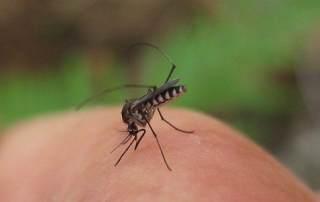Bug Bites: When Do They Become an Emergency?

Fortunately, most bug bites are a short-lived if painful inconvenience, which are easily taken care of with a few home or over-the-counter remedies. Occasionally, though, a more severe reaction may need medical attention.
The problem with bug bites is that often we don’t know what’s bitten us. Recognizing different bites and being aware of potentially dangerous symptoms to look out for, you’ll know when to get medical help and when it’s not needed.
Mosquito Bites
That high-pitched whine is enough to make anyone break out in hives, especially when you hear it in the dead of night just as you’re falling asleep.
You’ll recognize a mosquito bite from the itchy, round lump or bump it produces on the skin. In normal circumstances, that itchy painful reaction will disappear after a few hours although the lump itself will probably take a few days to subside. Some people are more sensitive, however, and the small bumps can spread to around the size of a quarter and feel very painful. They nearly always itch like crazy.
If you can, wash the area with soap and water, then apply a calamine or other anti-itch cream. Over the counter anti-histamines can help deal with mild allergic reactions, and an ice pack on the bite can relieve the itching and swelling. It’s tough, but fight the urge to scratch. If you break the skin at the bite site, you leave the area open to infection. Dabbing the bite with rubbing alcohol is also a useful way to reduce the itch, but it can irritate your skin if you use it too often.
It’s worth bearing in mind that while mosquitos can carry disease such as West Nile Fever, very few do. For that tiny percentage, symptoms such as aches in the body or head, general pains, swollen glands or fever, may appear up to fifteen days after the bite. These need medical attention.
Bees and Wasps
Bees don’t sting for fun. They have one sting in them, and when they use it, they die. You’ll know a bee stung you from the sharp pain at the sting site. You may even see the stinger, which the bee often leaves behind. If so, try to remove it immediately as it will continue to discharge venom for a few seconds. A red welt will form with a yellowish center which is where the sting entered. It may feel itchy and hot. Some people are very allergic to bee stings, so watch for swelling around the mouth, eyes or face and seek medical attention immediately.
Wasps, including yellow jackets, can sting multiple times and they tend to be more aggressive than bees. The sting can be intensely painful and result in a red, itchy, lump, much like bee stings. Sometimes a skin reaction causes swelling and redness to extend beyond the sting site and this can last for several days. Yellow jackets are the insects most likely to cause allergic reactions including anaphylaxis, which can be life threatening and needs urgent emergency care.
Spiders
Most biting spiders are not poisonous, although some people have an allergic reaction to them. Similar to a bee sting, you’ll probably see a red, circular mark with a paler center, and the area may swell and feel painful or itchy. If you’re in an area where black widows or brown recluses live, take more care.
- Reactions to black widow bites appear around half an hour after the bite with pain and swelling, followed by muscle pain or stiffness, sickness or nausea.
- Brown recluse bites look like bluish bruises that can form a crust or go darker after a few days.
If you suspect a bite from either of these spiders, get medical attention immediately.
Ants
Fire ants in particular are nasty little things. Their two-pronged attack includes an initial bite so they can hang onto your skin, then a sting. Small pustules appear, and there can be lots of them. You’ll feel a sharp pain as they bite, and a burn as they sting. The bumps can be sore and itchy. Carpenter ants bite too, and while these aren’t poisonous, they burn by spraying formic acid as they bite.
Symptoms to Watch For
Babies and children are more vulnerable than adults are, although everyone should be aware of the danger symptoms to watch out for following any bites or stings:
- Coughing or Wheezing.
- Swelling around the eyes, tongue, lips, throat, hands or feet.
- Feeling sick or nauseous, diarrhea, or stomach cramps
- Going into shock
Red lumps and bumps, soreness, itching, and tenderness at the sting site are all common reactions that can be safely treated at home. If any other symptoms develop over hours, days or even weeks in some cases, you should get professional medical help.
Used under Creative Commons image attribution license 2.0




